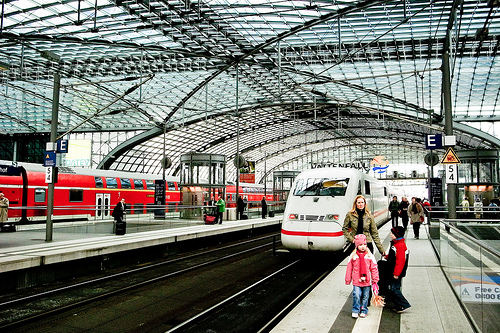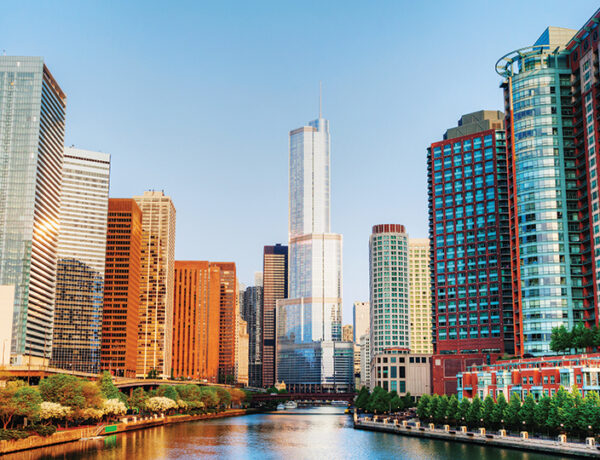When in Europe, the best way to travel from one city to another or from one country to the other is by train. Europe probably has the most extensive railways in the world. There must be over a hundred train stations, all exceptionally well-connected to each other. Because railway stations are numerous, there will always be those which go beyond normal engineering. Many of the busiest, the largest, the deepest, and the longest and tallest are located in Europe. And in celebration of Rail Europe’s new Rail Concierge service, which helps you travel hassle-free, let’s highlight nine of the toughest railway stations in Europe.
Gare du Nord in Paris, France

Located in Paris, France, Gare du Nord, or North Station, is considered as the busiest railway station in terms of passengers all over Europe. According to statistics, it serves approximately 200 million travelers annually. This train station, owned by the French National Railway Corporation (SNCF), is a hub which connects several lines, especially traveling towards Northern Europe. It also serves tourists from the United Kingdom, Germany, Netherlands and Belgium as it has lines connected to these countries. This station, built in 1864 and rebuilt in 1889, along with several expansions between 1940 and 1960, has 44 platforms.
Clapham Junction in London, England

In terms of the number of trains per hour served by a single station, the winner is Clapham Junction. Located in Battersea, London, this railway station has 180 trains every hour passing through the station, with 110 trains stopping to pickup/dropoff passengers. Daily, more than 2,000 trains pass through Clapham Junction. This railway station is owned by Network Rail and managed by South West Trains. It has 17 platforms, divided into northern groups, in west-southwesterly direction and southern groups, in southwesterly direction. Because it is a junction of several railway lines, it was named Clapham Junction. But even if it is a junction, opened in 1863, the station has very few public toilets, refreshment stalls or shopping stores – you’ll have to head to the friendly neighborhood of Clapham for that.
Zurich Hauptbahnhof in Zurich, Switzerland

This largest station in Switzerland is a railway hub which serves trains traveling across Switzerland, Austria, France, Germany and Italy. Zurich Hauptbahnhof, or Zurich Central Station, which opened in 1847 and rebuilt in 1990, is the oldest in the country. Opening from 5:00AM and closing at 1:00AM, this station serves almost 3,000 trains every day. Each day, 350,000 passengers pass through this station. Located in Bahnhofplatz, this train station is not just busy because of the trains; it is also busy because it houses Shopsville, a large shopping center built underground. On Sundays, even if the city of Zurich is bare, this underground railway station, nicknamed Rail City, is pumping with activities.
Leipzig Hauptbahnhof in Leipzig, Germany

In terms of floor area, Leipzig Haupbahnhof must be the largest among the railway stations in Europe with 83,460 square meters. Opened in 1915, this train station was originally a joint passenger terminal for the Prussian state railways and the Royal Saxon State Railways. Its 24 platforms average 120,000 to 150,000 passengers daily. Annually, 54 million passengers use the railway station not just for the trains but also for its massive selection of shopping conveniences underground.
Berlin Hauptbahnhof in Berlin, Germany

As the main railway station in Berlin, Berlin Hauptbahnhof is at present considered as the largest train station with multiple levels. Opened in 2006, it is constructed on the site of the historic Lehrter Bahnhof, which opened in 1871 as a link for trains coming from Berlin to Lehrter. Now it is a modern crossing station in Europe. There are six tracks in at the upper level and eight tracks at the lower level. Statistics have shown that 1,800 trains pass through the station daily. For the number of passengers, an estimated 350,000 travelers are using the train station every day. The farthest city reached by the tracks of this massive modern railway station is in Novosibirsk in Russia and Astana in Kazakhstan.
Gare de Chatelet-Les Halles in Paris, France

Perhaps it is not so hard to believe that in the undergrounds of Paris, France, there are 750,000 passengers daily traveling from one place to another? This figure includes those who are traveling through the Regional Express Network (REN), which amounts to almost half a million passengers. Of this network, it is Gare de Chatelet-Les Halles that is considered as the busiest underground train station, not just in Europe, but in the whole world. Every hour during the peak period, 120 trains pass through the railway station.
Jungfraujoch Railway in Interlaken, Switzerland

The highest railway station in Europe is located in Switzerland, a cool 3,454 meters above sea level. In 1896, the work for the construction of the railway station and the tunnels was started. For more than 85 years, it has become a tourist destination, especially for those who are traveling or plainly sightseeing the Swiss Alps as there are great connections to other popular destinations and trains, such as the Glacier Express, one of the world’s most famous named passenger trains.
Arsenalna in Kiev, Ukraine

Arsenalna is the deepest railway station in the whole world. Located 105.5 meters below the ground, it only has one platform and contains two tracks. The station was opened in 1960 and is owned by Kiev Metro. In order to go to the railway station, one must use an escalator that takes five minutes to travel standing still – this is probably considered as the longest escalator ride in the world. Traveling from Sviatoshynsko to Brovarska Line, this crazy construction should not be missed.
Park Pobedy in Moscow, Russia

Although second only to Arsenalna in Kiev, with its 84 meters depth, Park Pobedy railway station has one platform forming an island between two tracks that travel from Arbatsko to Pokrovskaya. The escalator-ride towards the surface and vice versa takes about three minutes. Opened in 2003, this station has an interesting feature; those who alight from the train do not get the chance to see those who will board the train, since the entrance and exit are in different locations.





No Comments